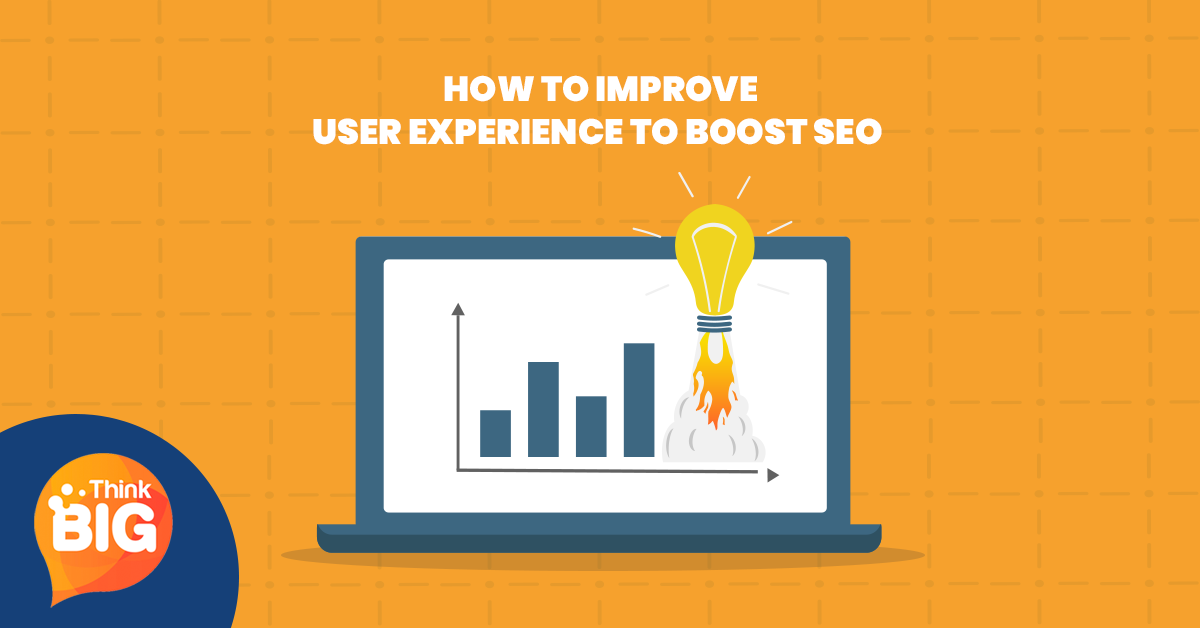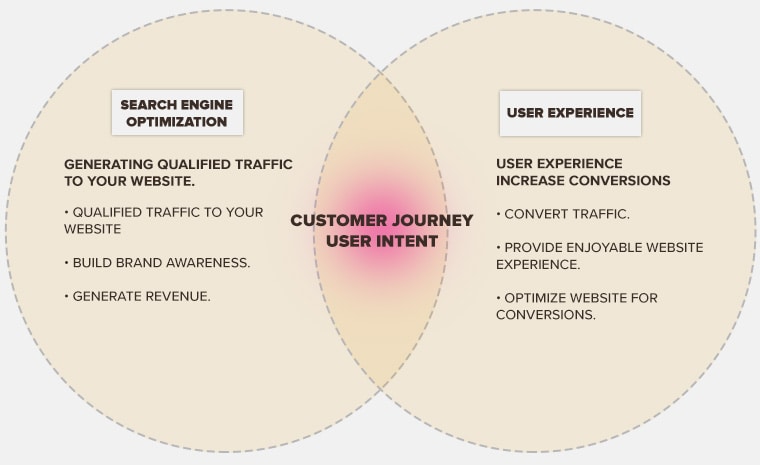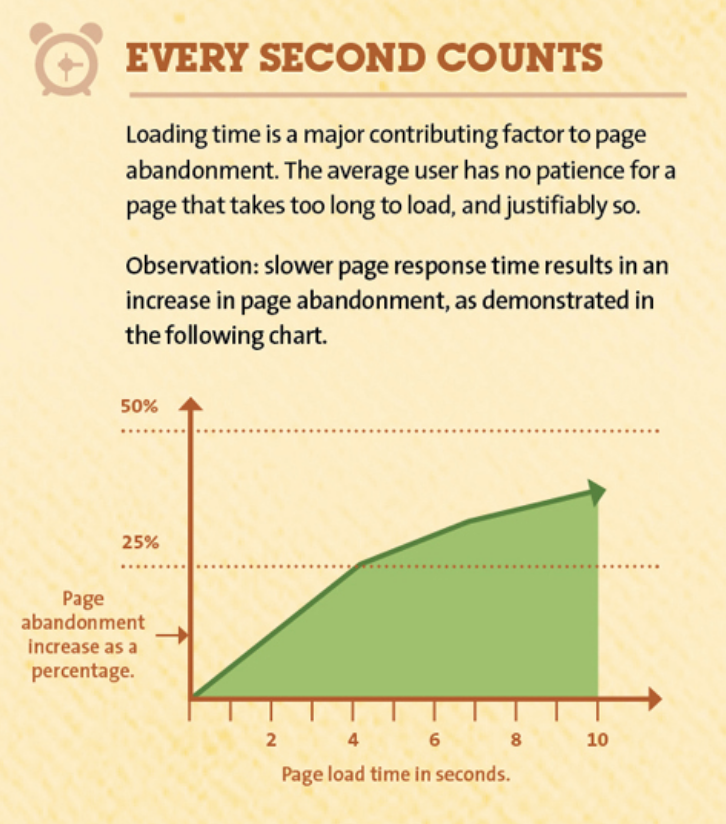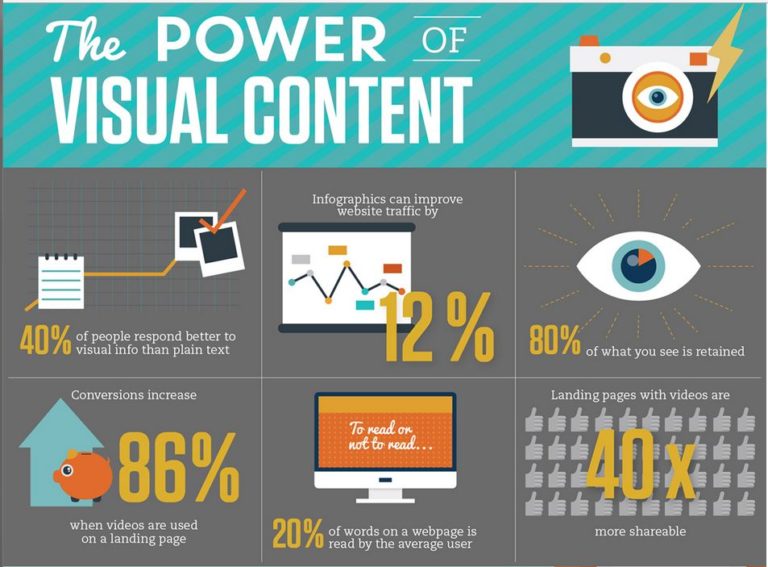
Wouldn’t it be great if we didn’t have to scramble every time Google changes its algorithm? Well, there might just be a magic bullet for that. If you look at Google’s recent updates, you’d notice that SEO and user experience go hand-in-hand. The trend will continue as search engines are becoming more sophisticated and take into account how visitors interact with website content.
Google’s RankBrain is driven by behavioral metrics, such as organic click-through-rate, dwell time, bounce rate, and pages per session. It uses these SEO metrics to determine if visitors enjoy their experience on a website or find the content useful.
By following user experience design best practices, you can boost your SEO and user experience because they also improve the behavioral metrics Google uses to determine its search engine ranking.

SEO and User Experience: Two Birds With One Stone
Increasingly, SEO and user experience design share common objectives, which are to provide visitors with useful content and help them complete their tasks.
Here are 9 best practices to help improve both SEO and user experience:
Formatting for SEO and User Experience
By using title tags (i.e., <h1>, <h2>, <h3> etc.) and including keywords in the headers, you can make a page easy for users to skim while letting search engines know what your content is about.
The use of headers shows the hierarchy of information while indicating the primary intent of the content to both readers and search engines.
In addition, use short paragraphs and white space to improve the readability of your content.
User-friendly formatting makes it easy for visitors to read more of your content, thereby increasing dwell time and signaling relevancy to search engines.
Site Speed
Slow page speed (i.e., the site loads slowly) delivers a poor user experience and impacts search engine ranking.

Google’s recent announcement on using mobile page speed as a ranking factor means the mobile user experience will impact your SEO ranking.
To optimize mobile site speed for SEO, you should minimize server response time, optimize images, avoid redirects, minify files, and use compression.
In addition, you can code the mobile site to load the above-the-fold portion of the page before the below-the-fold portion so visitors can see the content without having to wait for the entire page to load.
Navigation and Site Structure
A website with clear navigation is essential in helping visitors find the information they need so they’d view more pages and spend more time on your site.
Meanwhile, a well-organized site structure makes it easy for search engines to crawl and understand your content.
In addition, a clean site navigation help increase the chances that your sitelinks will be included in Google’s search results, so you can take over more space on the search results page and capture the attention of more searchers

Visual Content
The use of visual content, such as product photos, infographics, and videos, can help increase engagement and improve on-page SEO and user experience.

You can augment user experience and increase dwell time by making the visual content interactive, e.g., using a 360-degree product view or a zoom function. (Be sure to optimize the images so they don’t impact load time.)
Don’t forget to use image tags, which improve usability in the event that the images don’t load. Image tags also give you an opportunity to include keywords that tell search engines what the visual content is about.
In addition, more users are expecting video content. A recent AdWeek survey found an 88% growth year over year in the time people spend watching videos on a smartphone.
Incorporating videos, such as product demo, user-generated content, or testimonials, is a great way to increase engagement and boost dwell time.
User Signals
When users show interest in your business – e.g., by clicking on posts on Google My Business or leaving 5-star reviews in online directories – your organic click-through-rate increases. This signals to search engines that users find your content relevant.
Posting your information on websites such as online directories also improves user experience by making it easy for visitors to find your website and engage with your brand.
In addition, leveraging mobile-specific features, such as a click-to-call button on your website can encourage visitors to interact with your content, signaling relevance to search engines.
Mobile Experience
BrightEdge research found that 57% of all online traffic is on mobile and tablet while consumers spend more than five hours a day on their smartphones.
That means you could be paying a hefty price if you ignore mobile usability.
Failing to optimize your website’s mobile experience could lead to a frustrating user experience that increases bounce rate and lowers dwell time.
For a better mobile experience, pare down the content on your mobile site, put the most relevant information at the top, ensure that fonts are legible, and include buttons and icons for fast and easy action choices.
You can also leverage mobile-specific features, such as GPS/location services and tap-to-call button, to augment the user experience.
Next Steps/Calls-To-Action
A page that’s a “dead end” – lacking clear indication or call-to-action on what actions you want visitors to take – can cause users to leave your site. This will increase bounce rate and reduce the number of pages viewed per session.
Improve your SEO and user experience by clearly indicating the “next steps” you want visitors to take, e.g., read recommended content, add an item to cart, or learn more about a product.
This will help visitors find useful information while encouraging them to engage with your website so you can increase dwell time and reduce bounce rate.
Word Count
Although there’s no clear formula linking word count with SEO ranking, it’s found that pages with little content are often ranked poorly in search results.
A study also noted that pages with longer content tend to rank higher. E.g., the average content length for top 3 rankings was about 750 words while that of a position 20 page was about 500 words.
Pages with thin content often fail to engage users because they lack substantial information.
In addition, higher word count often offer more opportunities to include keywords and LSI keywords in the content to signal relevancy to search engines.
Keywords-Content Match
Optimizing for keywords can help drive traffic to your website. To improve user experience and get visitors to stick around, you also need to make sure the content matches the keywords you’re ranking for.
Such consistency helps deliver a coherent experience so visitors who discover your website through search will also find the information relevant and useful.
In turn, they’ll engage with your content and spend time on your website, signaling relevancy to search engines.
To attract high-quality traffic that’ll engage with your content, research and rank for long-tail keywords, which are often used by searchers looking for a specific product or service.
Conclusion
Since SEO and user experience go hand-in-hand, your SEO metrics – such as conversion rate and bounce rate – are good indicators of your website’s usability.
For example, if a particular page shows a high bounce rate, you should review the page design to see if it’s optimized for the best user experience.
Analyze your SEO data and use the insights to help improve user experience and engagement, which will in turn help boost your SEO and user experience.
You can also utilize tools, such as heatmap and funnel tracking, to research user behaviors and test your page designs.
Last but not least, don’t forget to test the adjustments and see if they’re indeed improving the behavioral metrics.
Ready to improve the SEO and user experience of your website?
You don’t have to go at it alone. We’ll help you optimize your website’s user experience while getting noticed by search engines so you can drive more high-quality traffic and improve your conversion rates.
Check out our comprehensive SEO consulting service to see how we can help.

